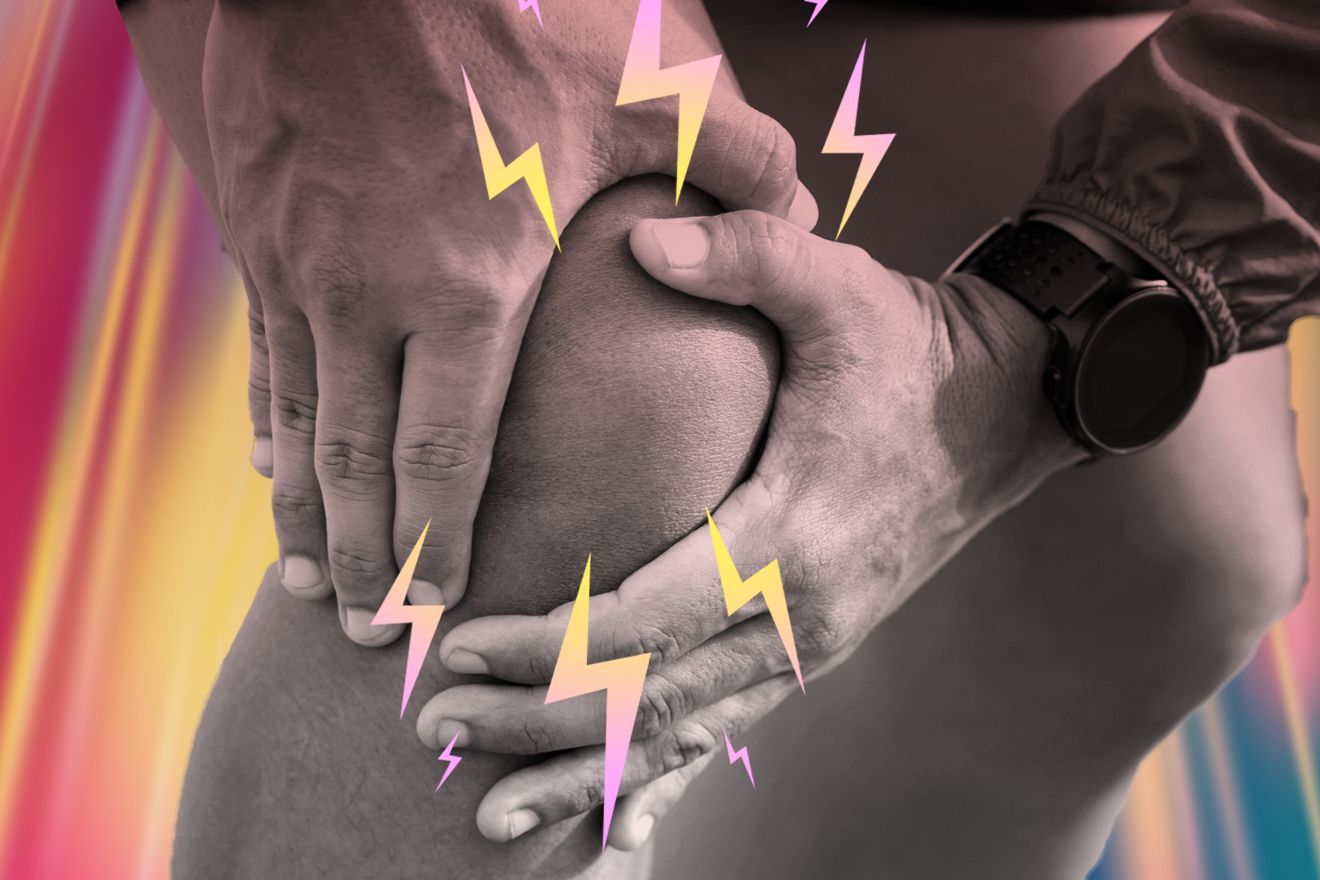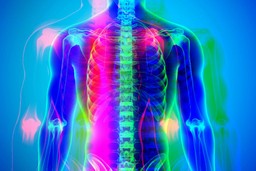Chronic phantom limb pain can be a debilitating condition. It typically occurs after amputation, in which the patient experiences real pain, but it happens in the missing limb. While the pain can peak after amputation and then taper off, some individuals experience pain for much longer.
Treatment for this chronic pain can be complex and usually involves medication to ease symptoms, electrical impulse stimulation, and/or cognitive therapy. However, recent studies into the benefits of psychedelics have revealed that one such drug, psilocybin, may be effective in reducing chronic phantom limb pain.
What is Chronic Phantom Limb Pain?
Phantom limb pain (PLP) is when someone feels discomfort in a body part that has been lost, usually through amputation. Usually, it occurs in an arm or leg. PLP is referred to as a neuropathic condition because though the pain is real, there is no physical cause of pain. Instead, researchers think it originates from the nervous system (the brain and spinal cord).
In most cases, PLP is acute and occurs shortly after the loss of the limb. During the three to six months it takes for a post-amputation wound to heal, amputees can usually expect PLP. Typically, PLP does not happen months or years post-loss. When phantom limb pain lasts longer than a few months, it is called chronic phantom limb pain.
Chronic phantom limb pain can be debilitating. The sensations of pain can vary in frequency and duration, ranging from seconds to days. The pain sensations may be itching, pressure, stabbing, cramping, throbbing, aching, tingling, shooting, twisting, or burning.
What Causes Phantom Limb Pain?
Scientists believe that mixed signals stemming from the spinal cord or brain can cause phantom pain in the amputated limb. This is because nerve connections between the brain and periphery endure even after amputation. Signals can then be incorrectly interpreted by the brain, misinterpreting them as pain sensations, even though the limb no longer remains.
Scientists believe memories of pain experienced pre-amputation can trigger chronic phantom limb pain. These pain memories, or flashbacks, are usually traumatic and can bring on chronic PLP. In addition, physical conditions may cause discomfort to the periphery area, contributing to PLP. These conditions include:
- Skin or wound infections
- Pressure wounds
- Bruising
- Ill-fitting prosthetic
- Nerve damage
- Nerve inflammation
- Bone infection or spurs
- Stress
- Changes in temperature or pressure
- Physical touch
- Angina
- Smoking
- Herpes zoster
Some triggers can be avoided, while others, like misinterpreted signals from the nervous system cannot.
How is Chronic Phantom Limb Pain Treated?
Most medical professionals use a multi-faceted approach to treating phantom limb pain. Generally, they will use medications and non-medicated therapy. Your doctor may rely on drugs to help ease pain symptoms; medicines can include:
- NSAIDs
- Beta-blockers
- Muscle relaxers
- Injections
- Anti Seizure medications
- Antidepressants
Non-medication treatments can vary. Electrical impulse stimulation may help regarding misinterpreted nervous system signals. These treatment options can include spinal cord stimulation, transcutaneous electrical nerve stimulation (TENS), and neurostimulation.
In addition, your doctor may recommend the following:
- Biofeedback
- Mirror therapy
- Massage
- Meditation
- Acupuncture
- Virtual reality therapy
Many doctors prescribe a combination of treatments to ease symptoms and reduce PLP.
What is Mirror Therapy?
Mirror therapy (MT), also known as mirror visual feedback (MVF), is used for pain or disability that predominantly affects one side of the body, such as PLP after amputation. A medical professional will use a mirror to create an illusion of the affected limb by reflecting the intact limb and hiding the affected limb, which they place behind the mirror in a box. The goal is to trick the brain into thinking the limb is not experiencing pain, such as during movement or touch.
Mirror visual feedback relies on somatosensory/proprioceptive input based on the mirror neuron system, neurons that fire when a person acts and when they observe the action performed. As the patient experiences artificial visual feedback, the brain unlearns negative circuitry.
Researchers first used it to treat phantom limb paralysis in which the patient felt that the phantom limb was clenched in a painful position that they could not change. When they experienced artificial visual feedback from the mirror of their phantom limb moving, the hypothesis was they could then “move” the phantom limb out of the painful position.
How Can Psilocybin Help Chronic Phantom Limb Pain?
Psilocybin is a psychedelic. It is often referred to as magic mushrooms because the compound naturally occurs in species of fungi. Psilocybin is being studied for its ability to produce mind-altering effects that may have therapeutic benefits. Instead of temporarily masking the pain symptoms, researchers wonder if this psychedelic substance can help “reset” the brain and eliminate the pain sensations.
One such study found that psilocybin could completely eliminate PLP in a patient when combined with mirror therapy. The patient in the study had tried other treatment methods, including opioids, cannabis, and mirror therapy, with slight improvement.
“We honestly don’t really know how psychedelics like psilocybin might work to manage pain. It’s likely related to activation of the 5HT-2A serotonin receptors. That could result in activation of inhibitory pain pathways in the brainstem that suppress incoming pain signals in the spinal cord. It is also possible that activation of serotonin receptors are engaging some form of neural plasticity that reduces ingrained chronic pain signaling,” says Timothy Furnish, MD Pain Fellowship Associate Program Director and Psychedelics and Health Research Initiative Medical Director at the Center for Pain Medicine UC San Diego Medical Center.
Follow your Curiosity
Sign up to receive our free psychedelic courses, 45 page eBook, and special offers delivered to your inbox.Researchers speculate that psilocybin may help with PLP because it can stimulate serotonin receptors. When stimulated, a cross-modal sensory experience can result. Cross-modal perception is usually used in virtual reality so that what an individual hears and sees matches perfectly to make the experience feel “real.” In the case of the patient mentioned above, using psilocybin during mirror therapy to create a cross-modal sensory experience may have enhanced the benefits of the mirror treatment.
Psilocybin also can increase neural plasticity, helping the brain form new neural connections, which may encourage cross-modal cortical reorganization. This effect may also boost the benefits of mirror therapy as mirror visual feedback requires crosstalk between visual perception and the parts of the nervous system that process touch sensations to help the brain “unlearn” the PLP signals.
“When patients with various chronic pain conditions, including phantom limb pain, are scanned in functional MRI scanners (fMRI) the patterns of connections between certain brain areas are different than the patterns in individuals without chronic pain,” Furnish explains.
“These connections between brain areas are referred to as intrinsic brain networks. These network connections are how the brain processes all kinds of information from outside the body and inside the body. Psychedelics profoundly alter the patterns of connections for these intrinsic brain networks. We have hypothesized that psychedelics could act as a reset button and help normalize these connection patterns for patients with chronic phantom limb pain. As a part of our study we are doing fMRI scans of individuals with phantom limb pain both before and after dosing sessions. They will be randomized to receive either psilocybin or an “active placebo” of niacin. Our aim is to see if psilocybin reduces their pain, and if it does to see if there are any persisting changes in these intrinsic brain network connections that could suggest a mechanism of action for analgesia associated with psilocybin”.
However, more research is needed. A current pilot study hopes to investigate whether psilocybin can be safely administered to those suffering from chronic PLP. In addition, researchers desire to learn its effects on pain symptoms, moods, behaviors, and attitudes. To do this, researchers plan to closely follow up with patients after assessing pain score outcomes and behavioral and neural responses post-psilocybin treatment.
Takeaway
More research is needed into phantom pain and psilocybin, including on the effectiveness of psilocybin in treating chronic phantom limb pain. Because psilocybin could increase neural plasticity and stimulate serotonin receptors for enhanced cross-modal sensory experiences, it may help the brain unlearn the misinterpretation of signals registering as pain. Initial studies have produced promising results, helping to ease and, in some cases, eliminate PLP.







